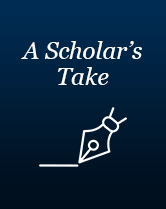
Beefing up COIN-Lite in Afghanistan and Pakistan
Counterinsurgency, commonly referred to by its military acronym, “COIN,” essentially boils down to armed nation-building — a deliberate process of empowering people and weakening guerrillas until a state-friendly balance emerges. By contrast, counterterrorism seeks the tactical annihilation of the enemy. President Barack Obama’s new Afghanistan and Pakistan strategy is an effort to do both, promising to dismantle and disrupt al-Qaida while leaving the expensive and time-consuming job of definitively defeating it to Islamabad and Kabul. Call it COIN-lite.
Can such an approach work?
For now, yes. But if we extend the time horizon to 5-10 years from now, the outlook is less promising. Al-Qaida and its affiliates will receive a severely damaging blow, but they won’t remain disabled for long. In medical terminology, the new strategy will stop the bleeding, but it cannot contain the risks of long-term infection.
In Afghanistan, military and civilian surges have already begun in highly populated, Taliban-controlled provinces — Kandahar, Helmand and Zabol — that straddle the Afghanistan-Pakistan border. In the coming months, this will augment ongoing efforts to overwhelm the enemy and rapidly transfer control to the Afghan police and army. Due to limited time and troops, however, subsequent efforts to out-administer the enemy will be nearly impossible. The Taliban and al-Qaida will remain weakened over the next two years, but they will re-emerge in the next five.
At the very least, America — and hopefully its allies — will have to continue to bear the financial burden of supporting the Afghan security forces for the next decade: The Afghan GDP will simply fall many times short of being able to maintain the proposed end-state of 400,000 army and police forces — even factoring in increased economic investment and falling levels of violence.
Meanwhile, in Pakistan, Washington’s strategy is driven by fear of a failing nuclear state and not by a need to create a sustainable partnership. The mission is intelligence-driven and enemy-centric, with an emphasis on near-term objectives: to bolster the Pakistani military’s campaign to regain and hold territory in the north (al-Qaida’s epicenter), to protect its nuclear weapons, and to quietly support democracy and development.
Such a strategy requires an increase in U.S. spies and drones deployed to Pakistani territory. But because such activity is highly unpopular among Pakistanis, most of the U.S.-Pakistan partnership will remain clandestine. That, in turn, will lead to even more cancerous anti-Americanism and conspiracy theories throughout the country. Eventually Pakistan’s military and civilian government will be infected. As for U.S. development aid, it is, and will remain, invisible.
This policy of “ask but don’t tell” for Pakistanis wanting to know more about development aid fails to take into account one of the most important battlefields of modern warfare — that of public perception. Islamabad insisted that keeping development dollars secret was the best way to increase its own legitimacy and to keep American aid workers safe. The net result after eight years? The civilian government is crumbling, and American diplomats and aid workers are living in an embassy resembling Alcatraz.
Today, making the U.S.-Pakistan relationship transparent and comprehensible is no longer optional, but required. The fundamental problem of American non-military aid is not its amount, deliverance or usefulness, but rather that most Pakistani “citizen recipients” don’t know what they’re getting, why they’re getting it, and where it all ends up. These questions must be credibly answered, and can be in creative ways, in a country with more than 90 million cell-phone users and 18 million internet users. (For more see my pilot project, www.usaidforme.com.)
Moreover, measured and holistic country-specific partnerships must be backed by a sound regional framework. For decades, Afghanistan has borne the brunt of an India-Pakistan proxy war, but Washington has yet to formulate a realistic response to this regional competition. Absent an effective influence-sharing formula between Indians and Pakistanis — one approved by the Afghans — President Obama’s strategy will lead the region back to the chaos of the 1990s. Only this time, there will be narco-terrorists eyeing nuclear weapons in the mix.
As a strategy, counterterrorism is limited. It stops existing terrorists, but not future recruits. Because al-Qaida and its affiliates lack structure and a fixed location, they cannot be militarily defeated. Instead, their destruction requires a long-term and multifaceted commitment of at least five to 10 years in Afghanistan and Pakistan.
While the scope and sequence of the necessary commitments differ between Afghanistan and Pakistan, some of the cures are the same for both countries. Both Afghan and Pakistani security forces — especially police — must be trained and equipped, albeit at different levels. More-visible non-military aid should be pledged toward helping Kabul and Islamabad improve education and the provision of justice.
Finally, American strategies and timetables will have to compete with al-Qaida’s counter-strategies and counter-timetables. Absent positive shifts in Afghan and Pakistani perceptions of the threat, as well as a demonstrated U.S. commitment to a long-term investment of its soft power, al-Qaida and its affiliates will simply wait out the American presence. To break the cycle of terrorist booms and busts, President Obama will have to make clear to Americans, Afghans and Pakistanis that while COIN-lite is the least-bad option for now, it will soon be upgraded.
———————————————————————————————————-
Haider Mullick is a senior fellow at the U.S. Joint Special Operations University, a research fellow at the Institute for Social Policy and Understanding, and the author of the forthcoming book-length monograph “Pakistan’s Security Paradox: Countering and Fomenting Insurgencies.” This article is the result of a recent research trip to India and Pakistan.
This article was also published on December 11, 2009 at World Politics Review
ISPU scholars are provided a space on our site to display a selection of op-eds. These were not necessarily commissioned by ISPU, nor is their presence on the site equal to an endorsement of the content. The opinions expressed are that of the author and do not necessarily reflect the views of ISPU.


